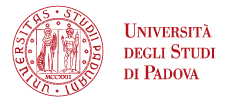
Fascial Manipulation in Veterinary Medicine
The course dedicated to animal fascial manipulation is developed on three levels, specific for dogs or horses. The training consists of theoretical lessons, practical demonstrations by the instructors, and hands-on activities performed by the participants; it delves into the anatomy and physiology of the animal fascial system, the biomechanical model used, and the anatomical location of the treatment points.
The online part of the courses can be viewed in Italian or English, while the in-person part is delivered in English.
To access higher-level courses, a certificate of attendance for the previous courses must be provided.
The Animal Fascial Manipulation courses are aimed at veterinarians, veterinary medicine students enrolled in the 4th or 5th year, physiotherapists, and veterinary operators with a good knowledge of the musculoskeletal anatomy.
Level 1
The first level addresses the animal myofascial system, dealing with the development of the veterinary fascial manipulation technique, the anatomy, physiology, and treatment techniques of the fascial system of dogs and horses; it delves into the localization of the Centers of Coordination, various movement tests in dogs and horses, and the development of a treatment protocol.
The course is structured in a hybrid format, with 10 hours of online lessons followed by 24 hours in-person.
The course will be held if a minimum number of participants is reached; payment will be possible after the confirmation that the course will take place.
Level 2
The second level deepens the anatomy and physiology of the retinacula, introducing and explaining the concepts of diagonal and spiral; it identifies the Centers of Fusion, studies motor tests for new movements, and develops a treatment protocol.
The course is structured in a hybrid format, with 10 hours of online lessons followed by 24 hours in-person.
The second level is currently scheduled for late 2025 - early 2026.
Level 3
The third level is specific for global dysfunctions related to internal fascia, which includes organ-fascial units (tensostructures) and apparatus-fascial sequences (chains). It studies palpatory verification for tensostructures to define the points interfering with the peristalsis of the single organ-fascial unit, then delving into palpatory verification for the various trunk and control chains, and limb tensors to restore biomechanics.
The course is entirely in-person, with theoretical lessons, practical sessions, and demonstrations for a total of 30 hours.
The course will be held if a minimum number of participants is reached; payment will be possible after the confirmation that the course will take place.





